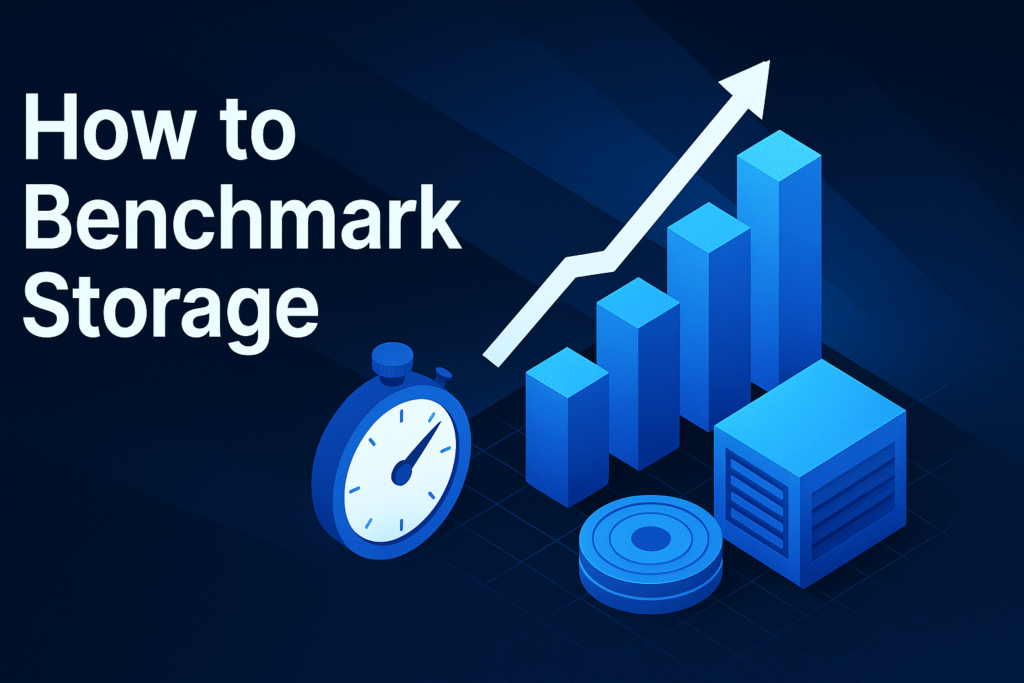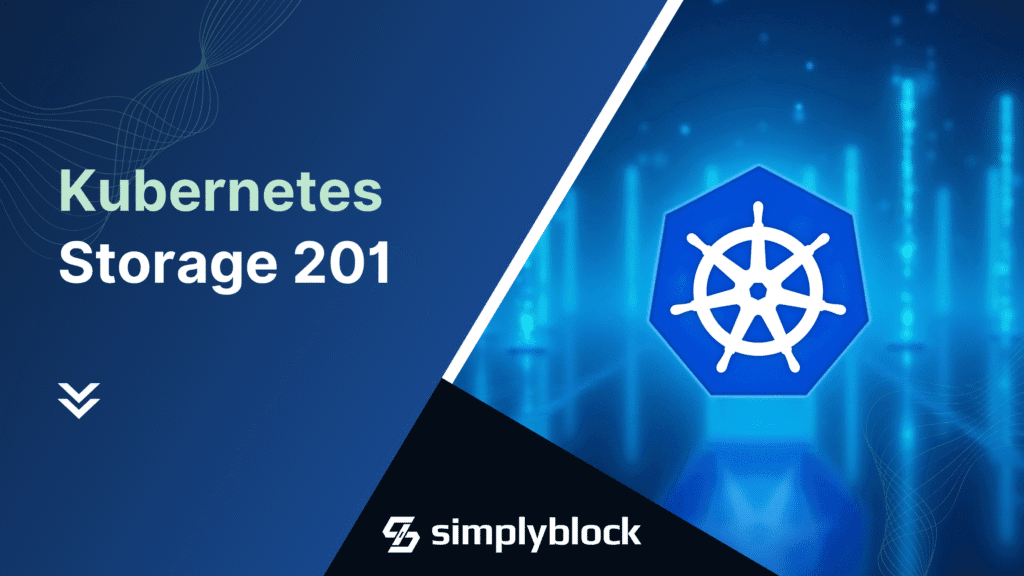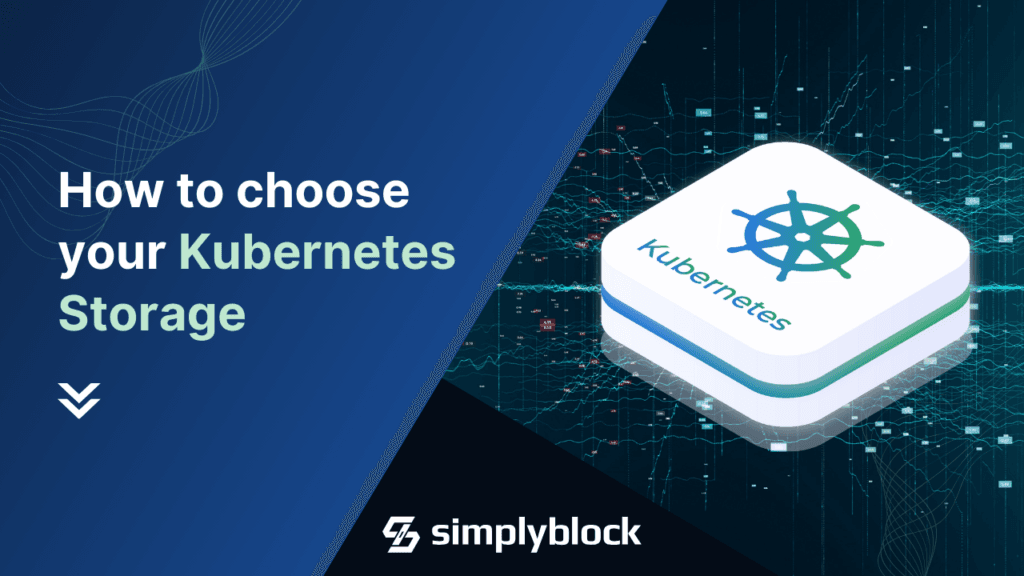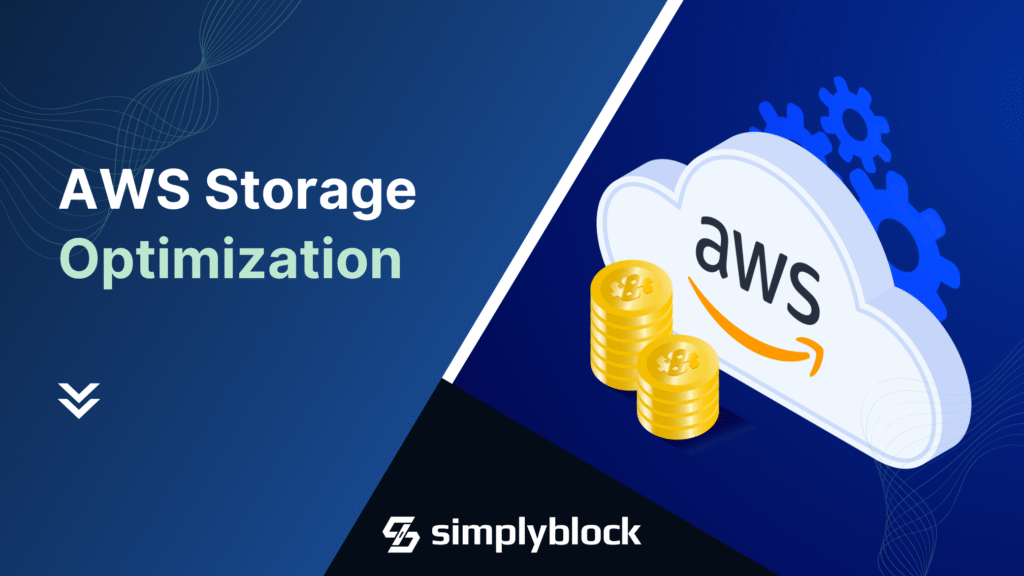
Table Of Contents
Benchmarking storage isn’t just about checking disk speed — it’s about knowing how your storage performs when it matters. Whether you’re running a cloud-native application, scaling a database, or optimizing your Kubernetes environment, understanding IOPS, latency, and throughput can help you plan and prevent performance bottlenecks.
This guide walks you through how to benchmark storage, when to do it, and how to make the results meaningful.
What is Storage Benchmarking
Storage benchmarking measures how your system handles different I/O patterns — reads, writes, random, sequential — to simulate real application behavior. It helps identify potential slowdowns and verifies whether your infrastructure is meeting performance expectations.
You’re not just testing hardware. You’re testing the whole stack: disk provisioning, virtualization overhead, network paths, and volume configurations.
🚀 Benchmark Storage Backed by Real-World Performance
Run high-IOPS, low-latency tests on storage built to handle real workloads.
👉 Optimize Storage for Database Performance →
When Should You Benchmark Storage
Performance testing is most valuable during moments of change or uncertainty.
You should benchmark your storage:
- When launching new workloads or scaling an existing stack
- Before and after migrating to disaggregated storage
- During infrastructure planning, like moving from on-prem to cloud
- When tuning databases or setting up high-availability clusters
- While debugging I/O bottlenecks, laggy apps, or storage-related alerts
For example, if you’re setting up multi-zone failover, you’ll want to validate throughput and latency to support disaster recovery between sites.

Common Tools Used for Storage Benchmarking
Several tools are trusted across Linux, Windows, and cloud environments.
fio is one of the most flexible tools available. It allows you to test various I/O workloads and patterns, and it’s well-suited for both SSD and block storage testing. sysbench is often used when benchmarking storage in conjunction with MySQL or PostgreSQL. Windows users often go with CrystalDiskMark for local performance checks.
If you’re working in Kubernetes, kubestr is purpose-built for testing Persistent Volume Claims (PVCs) via CSI drivers.
To avoid misleading numbers, it’s also a good idea to follow vendor-specific recommendations. For example, AWS provides some guidelines for benchmarking their EBS volumes effectively.
Steps to Run an Effective Storage Benchmark
Benchmarking doesn’t require an advanced lab — it just needs a clear goal and the right tool. Here’s a simple process:
- Define the objective
Are you testing database readiness, throughput limits, or multi-user performance? - Choose the right tool
Usefioorsysbenchfor flexibility. For Kubernetes clusters, go withkubestr. - Simulate your workload
Run tests with realistic read/write patterns. Match your database or application behavior. - Repeat across time
Test under normal load and stress conditions. Run during off-peak and high-traffic windows. - Track key results
Focus on IOPS, latency, and MB/s. Log output and compare runs to detect performance drift. - Tune and retest
Adjust volume types, disk settings, or storage class parameters based on results.
Key Metrics You Should Focus On
Three core metrics matter most.
IOPS tells you how many read/write operations your disk can handle per second — essential for transactional apps. Throughput, measured in MB/s, reflects how fast your system can move large volumes of data, especially important for batch processing or backups. Latency, measured in milliseconds, reveals how responsive the storage is. Even small delays in high-concurrency systems can impact user experience or slow down workloads.
For Kubernetes environments, storage class configurations, volume types, and provisioners can all impact these numbers, so testing within the actual cluster setup is crucial.
Why Simplyblock Makes Benchmarking Results Count
Running the right benchmark is one thing. Getting consistent, production-grade performance is another. Simplyblock is built to meet both.
It delivers high-throughput, low-latency block storage for Kubernetes, Proxmox, and VMware environments. Whether you’re testing snapshots, IOPS under pressure, or running multi-tenant workloads, Simplyblock’s architecture ensures you get predictable, scalable performance that holds up under real application loads.
With support for Kubernetes-native CSI, disaster recovery zones, and database-heavy workloads, Simplyblock removes the guesswork from infrastructure planning.
Why Benchmarking Should Be in Your Workflow
Benchmarking isn’t a one-time task — it’s part of building systems that work under pressure. Whether you’re validating cloud storage, tuning performance, or preparing for scale, regular benchmarks help you make smarter, data-driven decisions.
Use tools that match your environment, test early and often, and make sure your storage backend is built to support what your applications need — both now and as they grow.
Questions and answers
Benchmarking Storage means measuring the performance of a storage system using key metrics like IOPS, latency, and throughput. It helps evaluate how fast and efficiently your storage handles data under different workloads. This is essential when comparing technologies like NVMe over TCP and iSCSI.
Popular tools to Benchmark Storage include FIO, IOzone, and Bonnie++. These simulate real workloads and offer insights into performance characteristics across different block sizes and queue depths.
To Benchmark Storage for latency and throughput, configure your benchmarking tool to simulate sequential and random I/O patterns. Use varying block sizes and depths to replicate production scenarios. See our guide on performance metrics for setup tips.
Benchmarking your storage before deployment ensures you choose the right technology for your needs. Whether using NVMe over TCP or iSCSI, Benchmark Storage results help match system capabilities to application requirements, avoiding performance bottlenecks.
In storage benchmarks, NVMe over TCP outperforms iSCSI by up to 35% in IOPS increase, 25% in latency reduction, and 20% in throughput improvement. These gains are achieved without changing hardware, making NVMe over TCP the smarter choice for modern workloads.



